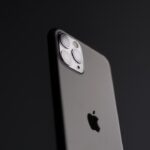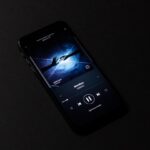Embedded SIM (eSIM) technology represents a significant evolution in mobile connectivity, moving away from the traditional physical SIM cards that have dominated the telecommunications landscape for decades. Unlike conventional SIM cards, which are removable and require physical handling, eSIMs are embedded directly into the device’s motherboard. This integration allows for a more streamlined design, as manufacturers can eliminate the SIM card tray, leading to thinner devices and potentially more space for other components, such as larger batteries or enhanced hardware.
The eSIM operates on the same principles as a traditional SIM card, providing the necessary credentials to connect to a mobile network. However, the key difference lies in its programmability. Users can download multiple carrier profiles onto their devices without needing to swap out physical cards.
This flexibility is particularly advantageous in an increasingly globalized world where users may need to switch carriers frequently or utilize different plans for various purposes. The eSIM technology is governed by the GSMA (Groupe Speciale Mobile Association), which sets standards for its implementation and ensures compatibility across devices and networks.
Key Takeaways
- eSIM technology allows for multiple SIM profiles to be stored on a device, eliminating the need for physical SIM cards.
- Multiple eSIM capabilities provide flexibility and convenience for users, allowing them to switch between different mobile plans and carriers without changing physical SIM cards.
- Setting up multiple eSIMs on iPhone 13 is a simple process that involves scanning a QR code or manually entering the eSIM details provided by the carrier.
- Managing multiple eSIMs on iPhone 13 can be done easily through the device settings, allowing users to activate, deactivate, or switch between eSIM profiles as needed.
- eSIMs are ideal for travel and international use, as they allow users to easily switch between local and international mobile plans without needing to physically swap SIM cards.
Benefits of Multiple eSIM Capabilities
Seamless Travel Experience
With multiple eSIM capabilities, users can easily switch between different mobile plans without the hassle of physically changing SIM cards. For instance, a traveler can maintain their home country’s number while also activating a local plan in their destination country, ensuring they remain connected without incurring exorbitant roaming charges.
Enhanced User Convenience and Flexibility
The ability to manage multiple eSIM profiles enhances user convenience and flexibility. Users can store several carrier profiles on their devices, allowing them to switch between networks based on their needs or preferences. This is especially useful in regions where network coverage varies significantly between providers
.
Adaptability and Accessibility
For example, if one carrier offers superior service in a specific area, users can quickly switch to that profile without needing to visit a store or wait for a new SIM card to arrive by mail. This adaptability not only saves time but also ensures that users can always access the best available service.
How to Set Up Multiple eSIMs on iPhone 13

Setting up multiple eSIMs on an iPhone 13 is a straightforward process that leverages the device’s user-friendly interface. To begin, users must ensure that their iPhone 13 is updated to the latest version of iOS, as updates often include enhancements and bug fixes related to eSIM functionality. Once confirmed, users can initiate the setup process by navigating to the “Settings” app and selecting “Cellular.” Here, they will find an option to add a new cellular plan.
To add an eSIM, users typically need a QR code provided by their carrier or may opt for manual entry of the details. Scanning the QR code is often the simplest method; once scanned, the iPhone will automatically configure the necessary settings. If manual entry is preferred, users will need to input details such as the activation code and any other required information.
After successfully adding the new plan, users can label each eSIM profile—such as “Personal” or “Business”—to easily distinguish between them. This labeling feature is particularly useful when managing multiple lines.
Managing Multiple eSIMs on iPhone 13
| Feature | Description |
|---|---|
| Number of eSIMs supported | Up to 2 eSIMs can be used on iPhone 13 models |
| Switching between eSIMs | Users can easily switch between active eSIMs in the settings |
| Managing eSIM profiles | Users can add, edit, or remove eSIM profiles in the settings |
| Carrier support | Check with your carrier for eSIM support and availability |
Once multiple eSIMs are set up on an iPhone 13, managing them becomes an essential task for users who wish to optimize their mobile experience. The device allows users to easily switch between different eSIM profiles through the “Cellular” settings menu. Users can select which line they want to use for voice calls, messages, and data usage, providing a high degree of customization based on their current needs.
Additionally, iPhone 13 users can prioritize their data plans by selecting which eSIM should be used for cellular data. This feature is particularly useful when one plan offers better data rates or coverage than another. Users can also disable specific lines temporarily without deleting them, allowing for seamless transitions between personal and business use or while traveling abroad.
The ability to manage these profiles directly from the device empowers users with greater control over their mobile connectivity and expenses.
eSIMs for Travel and International Use
The advent of eSIM technology has revolutionized how travelers approach mobile connectivity while abroad. Traditionally, international travelers faced challenges such as high roaming fees or the inconvenience of purchasing local SIM cards upon arrival in a foreign country. With eSIMs, travelers can download local carrier profiles before their trip or upon arrival, enabling them to access local rates without needing to physically change SIM cards.
For example, a traveler heading to Europe can purchase an eSIM plan from a local provider that offers competitive rates for data and calls within the region. This not only reduces costs but also enhances convenience, as travelers can remain connected without worrying about finding a store that sells physical SIM cards. Furthermore, many eSIM providers offer flexible plans that cater specifically to short-term visitors, allowing users to select options that best fit their travel itinerary.
eSIMs for Business and Personal Use

The dual-SIM capability of eSIM technology is particularly advantageous for professionals who juggle both personal and business communications on a single device. By utilizing multiple eSIM profiles, users can maintain separate lines for work and personal use without needing to carry two phones. This separation helps streamline communication and organization while reducing the clutter of multiple devices.
In addition to convenience, having distinct profiles allows users to manage expenses more effectively. Business-related calls and data usage can be tracked separately from personal usage, simplifying accounting and reimbursement processes. Moreover, businesses can issue company-owned devices with pre-configured eSIM profiles that align with corporate plans, ensuring employees have immediate access to necessary services without delays associated with physical SIM card distribution.
Security and Privacy Considerations with Multiple eSIMs
While eSIM technology offers numerous benefits, it also raises important security and privacy considerations that users must be aware of when managing multiple profiles. One primary concern is the potential for unauthorized access to an individual’s mobile accounts if proper security measures are not in place. Users should ensure that their devices are protected with strong passwords or biometric authentication methods such as Face ID or Touch ID.
Additionally, when switching between different eSIM profiles, users should be cautious about which networks they connect to, especially when traveling internationally. Public Wi-Fi networks can pose significant security risks; therefore, using a VPN (Virtual Private Network) while connected to such networks is advisable to safeguard sensitive information from potential cyber threats. Furthermore, users should regularly review their active eSIM profiles and remove any that are no longer needed or used to minimize exposure to security vulnerabilities.
Future Trends and Developments in eSIM Technology
As technology continues to evolve rapidly, so too does the landscape of mobile connectivity with eSIMs at its forefront. One anticipated trend is the increased adoption of eSIM technology across various devices beyond smartphones, including tablets, wearables, and IoT (Internet of Things) devices. This expansion will likely lead to more seamless connectivity experiences across different platforms and environments.
Moreover, advancements in network technologies such as 5G are expected to further enhance the capabilities of eSIMs. With faster data speeds and lower latency offered by 5G networks, users will benefit from improved performance when switching between profiles or accessing data-intensive applications while on the go. Additionally, as more carriers adopt eSIM technology globally, users will have access to an even broader range of options for mobile plans tailored to their specific needs.
In conclusion, the evolution of eSIM technology marks a significant shift in how we connect and communicate in an increasingly mobile world. With its myriad benefits—from convenience and flexibility in managing multiple profiles to enhanced security measures—eSIMs are poised to become an integral part of our digital lives as we move forward into an era defined by connectivity and innovation.
If you are curious about the capabilities of the iPhone 13 when it comes to eSIMs, you may also be interested in learning about how to use your iPhone hotspot for a Rokoko suit connection. This article explores the potential of using your iPhone as a hotspot for connecting to a Rokoko suit, which can be a useful tool for motion capture and virtual reality applications. Check out the article










